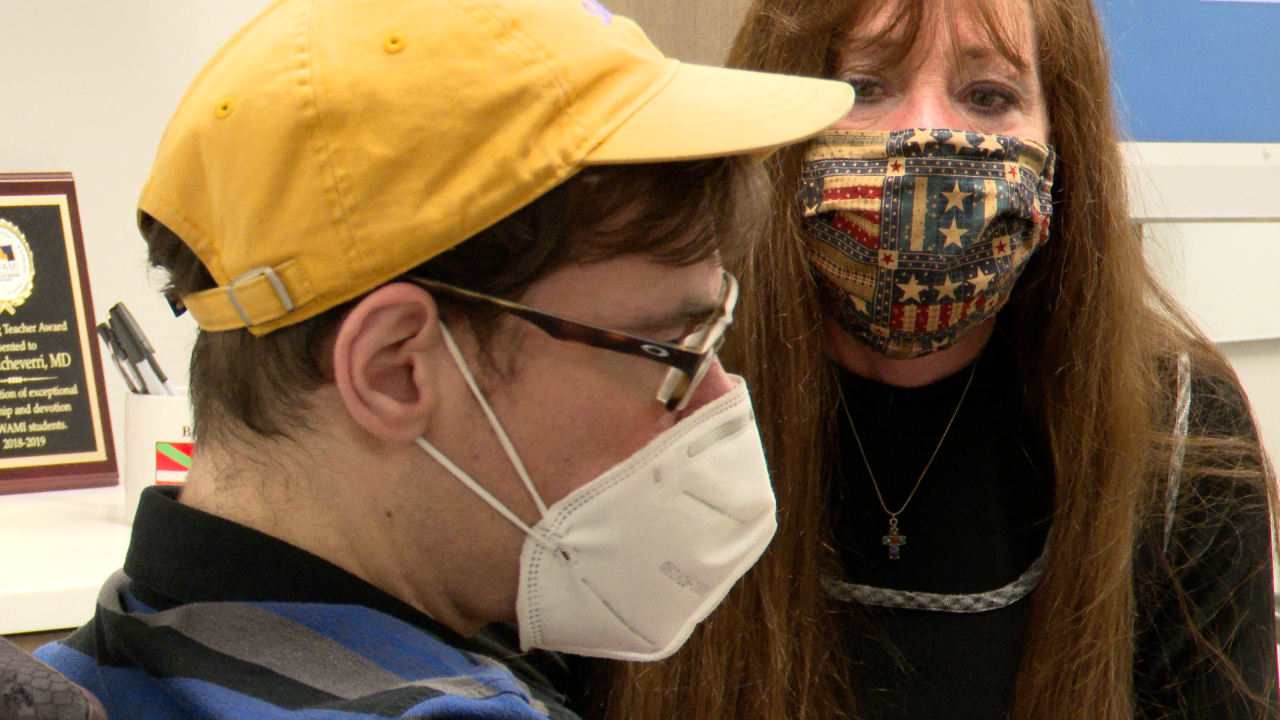On Tuesday afternoon, Vicki Smith and her son Christopher drove from Helena to St. Vincent Health Care Regional Neuroscience center in Billings for a checkup after surgery that Christopher had less than one month ago.
Christopher and his twin brother, Matthew, were born premature, with Christopher weighing one pound 15 ounces and Matthew one pound 14 ounces.

Due to being born premature, Christopher had some medical complications. He was diagnosed with cerebral palsy, which ultimately caused him to form an S-curve in his spine. Christopher was diagnosed with scoliosis.
“He couldn't hold his head up. His head was always down here, his chin in his chest. He was getting pneumonia all the time because the scoliosis was collapsing one of his lungs,” said Vicki Smith Tuesday afternoon.

Smith said that her son had rods and wired placed in his back to align his spine when he was 10 years old, which resulted in Christopher being able to sit up straight. The procedure also prevented him from getting pneumonia due to the pressure being relieved from his lungs.
In 2019, things started to change for Christopher.
“He was irritable, didn’t want to move in certain ways. You could tell he was just in pain of some sort,” said Vicki Smith.

After consulting with multiple specialists and process of elimination, Smith was told that one of the rods that had previously been placed in her son’s back had broken. The current doctor that Christopher had been seeing referred him to Dr. Robert Lynagh, a neurosurgeon at St. Vincent Healthcare in Billings.
Lynaugh told Smith the best method of treatment would be to stabilize the broken rod through surgery performed using a robot.
“They said it is not as invasive… recovery time is faster…rehabilitation is a shorter time frame because it is not as intense of a surgery…It was almost like too good to be true. Dr. Lynagh said that with patients like Christopher, relief is almost immediate,” said Smith.
Lynagh said Tuesday afternoon that using the robot allows for quicker and more precise surgeries.
“These surgeries can be long. They can be eight, nine, ten hours. If you have the robot taking a lot of the stress off your shoulders, then you are much fresher for the more intricate part of the case. When you have the robot helping with those more complex cases, it can be a valuable tool,” said Lynagh.

Lynagh used the robot to perform the surgery on Christopher April 7. According to Smith, Christopher was pain-free two days after the procedure.
“We have an amazing opportunity now to get him back on his feet and back to activities he used to love to do,” said Smith.

Dr. Lynagh said the robot, which is referred to as the Globus Excelsius Spine Robot (GPS), was introduced to St. Vincent Healthcare within the past six months.
The only other hospital in Montana that utilizes the GPS robot is their sister hospital St. James in Butte.



